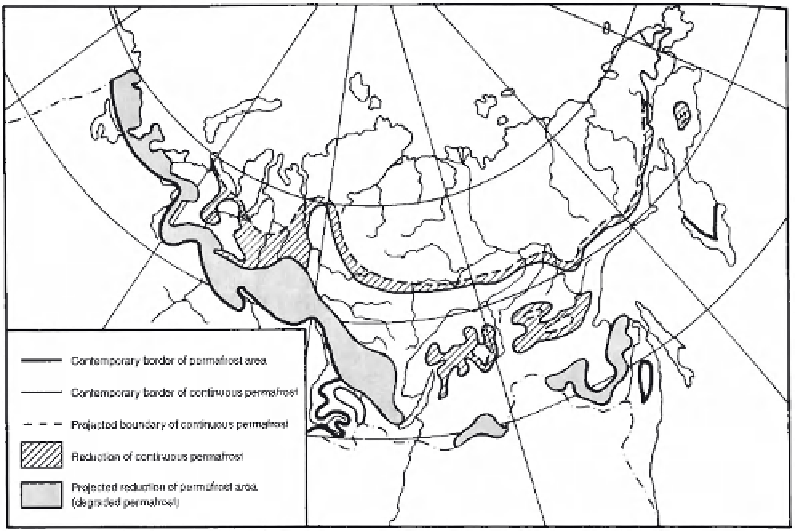Geology Reference
In-Depth Information
Figure 15.4.
Predicted changes in permafrost distribution in Siberia as the result of a surface
temperature increase of 2 °C. From Anisimov (1989, quoted in Street and Melnikov, 1990).
atmosphere (Lewkowicz, 1987, 1988b). In the absence of long-term data, however, it is
unclear whether present rates of ablation are signifi cantly higher than those that occurred
in the late 19th century. The same is true for active-layer detachments, which are triggered
as the active layer deepens. Studies on the Fosheim Peninsula of Ellesmere Island
(Lewkowicz, 1990, 1992b) demonstrate their frequent occurrence today, and in the past.
Whether the rate of current activity is greater or less than in the past, however, is open to
debate, especially given the exceptionally hot summer of 1988 in the Canadian High
Arctic (Edlund et al., 1989).
Although climate change will affect soils in all environments, cryosols (see Chapter
4) will be one of the most affected soil groups. This is because of increased thaw or
localized disappearance of permafrost. Moreover, thawing of soil organic matter will
trigger decomposition and release of carbon in the forms of CO
2
and CH
4
. According
to C. Tarnocai (2004b), approximately 48% of the total organic carbon in the cryosols
of Canada will be severely affected by climate warming. Figure 15.5 illustrates the path-
ways of expected changes in organic and mineral cryosols as a result of climate warming.
Carbon released in “wet” cryosols (i.e. organic terrain) will probably be released in the
form of CH
4
. This is 21 times more effective as a greenhouse gas than CO
2
. Thus, the
degradation of peaty permafrost terrain contains an extremely strong positive feedback
mechanism for enhanced warming although this might be offset slightly by increased
peat development (carbon sequestration) because of higher temperatures and elevated
CO
2
levels.

